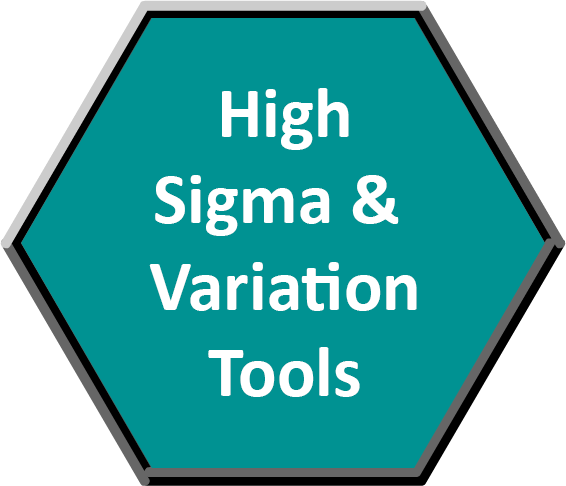
Circuit High Sigma &
Variation Tools
Variation-aware design, Fast Monte Carlo and Fast High Sigma
MunEDA WiCkeDTM Tool Suite
Circuit High Sigma & Variation Analysis & Verification
MunEDA WiCkeDTM High Sigma and Variation delivers world’s best-in-class EDA tools for automated circuit analysis for high-sigma (4 to 6 Sigma) and ultra-high-sigma (beyond 6 Sigma) variation, mismatch, robustness and yield analysis for IC designs. MunEDA offers a choice of various powerful Monte Carlo based and deterministic methods and tools, including machine-learning algorithms and importance sampling, for high-end statistical variation analysis.
Basic, enhanced and advanced high-sigma variation analysis and verification tools features
- Full simulator accuracy for all High Sigma and Variation tools
- high capacity: scalable to large circuits (>50,000 devices)
- Sensitivity analysis for constraints, performances, variation and process parameters
- Fast Monte Carlo and Yield Analysis for low sigma (3 Sigma), high sigma (4-6 sigma) and ultra-high sigma (beyond 6 sigma)
- Fast Monte Carlo using scaled sampling and importance sampling
- Simulator-true Worst Case Analysis & Diagnosis for fast high and ultra-high sigma variation and yield analysis and verification
- Monte Carlo based mismatch and contributor analysis
- supports aging and degradation simulation for circuit life-time variation and yield
- Automated Yield & Robustness Optimization using the MunEDA WiCkeD Circuit Sizing & Optimization Tools
Highlights of MunEDA WiCkeDTM Circuit High Sigma &
Variation Tool Suite
- Covers the full sigma variation range from low (3 sigma), high (4-6 sigma) to ultra-high (6-12 sigma)
- Only simulation true and available solution for ultra-high sigma verification (6-12 sigma and higher)
- Selection of several Monte Carlo based and deterministic Worst Case analysis yield and robustness verification methods available, can also be combined
- Simulator-agnostic and hierarchical Monte Carlo and Worst Case Analysis
- Multi-testbench, multi-netlist, multi-simulator Monte-Carlo and deterministic Worst-Case Methods significantly enhances results and reduces number of simulations
- Silicon proven in many different circuit designs and process technologies e.g. SRAM, DRAM, Flash, EEPROM, MRAM, CRAM, Analog, Digital, Libraries, IP, Mixed-Signal from 350nm CMOS to 5nm FinFET

Benefits of MunEDA WiCkeDTM Circuit High Sigma &
Variation Tool Suite
- 10x-100x times faster and less simulation effort for low sigma
- 100x-1,000x times faster and less simulation effort for high sigma
- 10,000,000x times faster and less simulation effort for ultra-high sigma (6-12 sigma and higher)
- Verifies 0-defect requirements in circuit design e.g. for automotive designs
- Scripting interface for batch-mode operations
- Includes reliability and degradation effects like aging, stress, temperature, operating conditions
- Full support of standard industrial SPICE & FastSPICE simulator programs
MunEDA WiCkeD Circuit High Sigma & Variation Tool Suite can be ideally complemented by
- MunEDA WiCkeD Circuit Porting & Migration Tools
- MunEDA WiCkeD Circuit Sizing & Optimization Tools
- MunEDA WiCkeD Circuit Analysis & Verification Tools
Tool Integration
Integration into standard industry design flow
- Can be used on all kind of custom analog and mixed-signal IC, IP cells and libraries
- Integrated and proven with numerous foundry PDK of world leading foundries (FinFET, FD-SOI, bulk CMOS, BiCMOS, Bipolar)
- Fully integrated into industrial standard circuit design environments with automated highlighting, selection, and backannotation of results from and to framework, netlists and schematics.
- Integrated with standard waveform viewers, extraction tools, job distribution tools.
- Easy integration of inhouse simulators and external scripts by open simulation API and scripting interface.
Several user modes available
- Full-integrated GUI mode with automatic parametrization, constraint setup and back-annotation
- Easy to invoke netlist-based stand-alone mode integration with your preferred simulator
- Scripting mode with full scriptable integration of all tools and functions for batch mode operation without GUI
Customer References
MunEDA circuit migration tools are successfully proven in numerous industrial circuit design projects with global semiconductor companies since many years.

“WiCkeD binary PASS/FAIL enabled us to use unmodified extracted netlists without need for internal probing or modifications. We derived and verified additional constraints to ensure internal 6-sigma robustness for all flops @ 0.5V and 0.8V”

“We are using WiCkeD Worst Case Analysis for High-Sigma Verification to have worst-case assumptions information on key characteristics of our SRAM bitcells. Our department needs to support many different technologies from different foundries, therefore the use of WiCkeD in our development flow is crucial.”
Let’s work together on your
next design project
Use MunEDA tools and support to speed up efficiency,
quality and outcome of your next circuit design project
